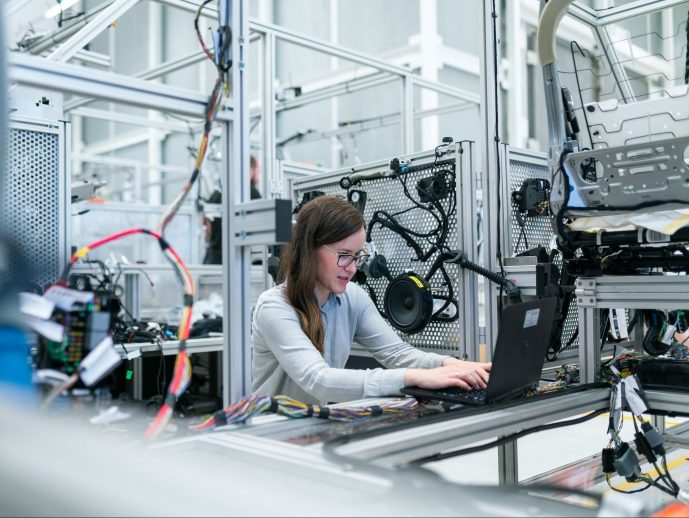Categories more
- Adventures (17)
- Arts / Collectables (15)
- Automotive (37)
- Aviation (11)
- Bath, Body, & Health (77)
- Children (6)
- Cigars / Spirits (32)
- Cuisine (16)
- Design/Architecture (22)
- Electronics (13)
- Entertainment (4)
- Event Planning (5)
- Fashion (46)
- Finance (9)
- Gifts / Misc (6)
- Home Decor (45)
- Jewelry (41)
- Pets (3)
- Philanthropy (1)
- Real Estate (16)
- Services (23)
- Sports / Golf (14)
- Vacation / Travel (60)
- Watches / Pens (15)
- Wines / Vines (24)
- Yachting / Boating (17)
A Beginner's Guide to FANUC CNC Systems
Published
03/20/2023As the manufacturing industry becomes more and more automated, Computer Numerical Control (CNC) machines are increasingly prevalent. CNC machines are used in a variety of manufacturing processes, from milling and drilling to turning and grinding. FANUC is one of the leading manufacturers of CNC systems worldwide. In this article, we will introduce you to FANUC CNC systems and their functions.
What is a FANUC CNC system?
FANUC CNC systems are computer-based controls that are used to operate CNC machines. These systems allow manufacturers to automate the manufacturing process and improve accuracy and efficiency. FANUC CNC systems consist of several components, including the CNC controller, servo motors, and feedback devices.
The CNC controller is the brain of the system, and it receives instructions from the operator or a computer-aided design (CAD) program. The controller interprets these instructions and sends signals to the servo motors, which control the movement of the machine's axes. The feedback devices provide information about the machine's position, speed, and other parameters, allowing the controller to make adjustments and ensure accuracy.
FANUC CNC systems are known for their high performance, reliability, and flexibility. They are used in a wide range of industries, including automotive, aerospace, electronics, and medical devices.
FANUC CNC system components
FANUC CNC systems consist of several components, including the CNC controller, servo motors, feedback devices, and other peripherals.
The CNC controller is the central component of the system, and it controls the machine's movement and operation. FANUC CNC controllers are available in several models, ranging from simple, compact models to high-end systems with advanced features.
Servo motors are used to control the movement of the machine's axes. FANUC offers a range of servo motors, including AC and DC motors with various torque ratings.
Feedback devices are used to provide information about the machine's position and speed. FANUC offers several types of feedback devices, including encoders, resolvers, and linear scales.
Other peripherals that may be included in a FANUC CNC system include spindle motors, tool changers, and coolant systems.
FANUC CNC programming
To operate a FANUC CNC system, you need to create a program that instructs the machine to perform the desired operations. FANUC CNC systems use a programming language called G-code, which is a standardized language used in CNC programming.
G-code consists of a series of commands that tell the machine how to move and perform operations. These commands include movement commands, such as G01 (linear interpolation) and G02/G03 (circular interpolation), and auxiliary commands, such as M03 (spindle on) and M05 (spindle off).
FANUC offers several software packages for programming its CNC systems, including FANUC MANUAL GUIDE i, FANUC CNC GUIDE, and FANUC NC Guide. These packages provide a user-friendly interface for creating G-code programs and can be used by both novice and experienced programmers.
FANUC CNC maintenance and troubleshooting
Like any complex system, FANUC CNC systems require regular maintenance and occasional troubleshooting to ensure their proper operation. FANUC offers several resources for maintaining and troubleshooting its CNC systems, including user manuals, training programs, and technical support.
Regular maintenance tasks for FANUC CNC systems include inspecting and cleaning the machine, checking and adjusting the servo motors and feedback devices, and updating the software and firmware. These tasks can be performed by trained technicians or by the machine operator, depending on the complexity of the system and the operator's skill level.
Troubleshooting a FANUC CNC system requires a systematic approach to identify and correct the problem. FANUC offers several resources for troubleshooting its CNC systems, including diagnostic tools, error codes, and technical support. Some common issues that may arise with a FANUC CNC system include communication errors, motor malfunctions, and software bugs.
FANUC CNC systems are widely used in the manufacturing industry for their high performance, reliability, and flexibility. These systems consist of several components, including the CNC controller, servo motors, and feedback devices, and use the G-code programming language to perform operations. To ensure the proper operation of a FANUC CNC system, regular maintenance and occasional troubleshooting are necessary. FANUC offers several resources for maintaining and troubleshooting its CNC systems, including user manuals, training programs, and technical support.
As CNC technology continues to evolve, FANUC remains at the forefront of the industry, offering cutting-edge solutions for manufacturers worldwide. If you are considering investing in a CNC machine for your business, a FANUC CNC system may be the right choice for you. With their advanced features, user-friendly interface, and reliable performance, FANUC CNC systems can help you increase productivity, reduce costs, and improve your bottom line.















